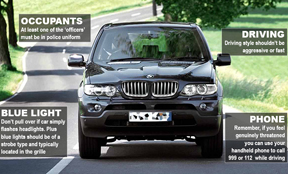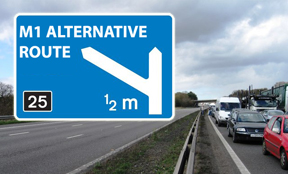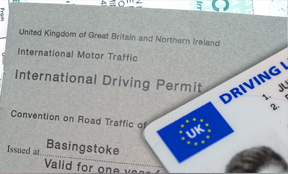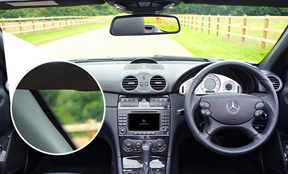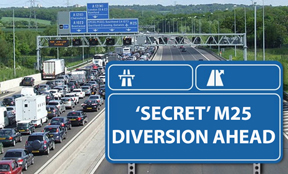
Electric vehicles (EVs) are becoming more common on UK roads, but new research suggests that EV drivers may be more likely to be involved in accidents than those driving petrol or diesel cars.
Evidence indicates that EV owners are more prone to at-fault collisions, claim on their insurance more frequently, and face higher repair costs than their internal combustion engine (ICE) counterparts.
 Are electric car drivers more likely to crash than those of
ice-powered vehicles? (Photo by Roman
Rezor on Unsplash)
Are electric car drivers more likely to crash than those of
ice-powered vehicles? (Photo by Roman
Rezor on Unsplash)
Are EV drivers more likely to have accidents?
A study conducted by the University of Limerick and Universitat de Barcelona found that EV drivers are 4% more likely to be involved in at-fault accidents compared to ICE vehicle drivers. Hybrid vehicle drivers had an even higher increase in accident risk, at 6% above petrol and diesel car users.
One of the reasons for this could be the instant torque and rapid acceleration that many EVs offer.
Unlike traditional petrol or diesel vehicles, which require engine revs to build up before reaching peak power, electric cars deliver maximum torque immediately. This can catch some drivers off guard, leading to errors—especially when adjusting to driving an EV for the first time.
Additionally, EVs tend to be quieter than conventional cars, meaning pedestrians and cyclists may not always hear them approaching, increasing the risk of accidents in urban environments.
EV insurance claims and costs
Insurance data shows that EV drivers are 56% more likely to file a claim than petrol car owners. On average, one in twelve EV drivers made an insurance claim last year, compared to one in twenty petrol car drivers, contributing to higher premiums for electric vehicles.
This increased claim frequency means that EV owners generally face higher insurance costs.
On average, EV insurance premiums in the UK stand at £1,211 per year, compared to £691 for petrol car drivers. This is a substantial difference and adds to the financial burden of owning an electric vehicle.
Why Are EV repairs more expensive?
When it comes to repairs, EVs are claimed to be 12% more expensive to fix compared to traditional petrol and diesel vehicles. This is due to the complex nature of electric car components, which often require specialist mechanics and parts that are still relatively new to the market.
For example, a minor accident involving an EV could lead to costly battery or electronic component replacements, significantly driving up repair costs. Some manufacturers also limit repairability by making it difficult to replace individual battery cells, leading to higher costs for owners.
How do EVs compare to ICE vehicles for accidents and insurance claims?
To summarise the key differences between EV and ICE drivers in terms of accidents, insurance claims, and costs, here is a comparison table:
| Category | EV Drivers | ICE (Petrol/Diesel) Drivers |
|---|---|---|
| At-Fault Accident Rate | 4% higher than ICE drivers | Lower risk |
| Hybrid Vehicle Accident Rate | 6% higher than ICE drivers | Lower risk |
| Claim Frequency | 1 in 12 EV drivers make a claim | 1 in 20 petrol car drivers claim |
| Insurance Cost (UK) | £1,211 per year (average) | £691 per year (average) |
| Repair Costs | 12% more expensive than ICE | Cheaper to repair |
What this means for EV drivers
While the data suggests EV drivers are statistically more likely to have at-fault accidents and higher repair costs, this does not necessarily mean electric cars are more dangerous. Many of the issues stem from driver adaptation to new technology, the performance characteristics of EVs, and the cost of repairing cutting-edge components.
For those considering switching to an EV, it is worth factoring in higher insurance costs and ensuring they take time to get used to the driving experience. With more EVs on the road, insurance companies may eventually adjust pricing models, and repair costs could decrease as mechanics become more familiar with these vehicles.
Switching from Petrol to Electric? What you need to know about driving differences
The transition from an internal combustion engine (ICE) car to an electric vehicle (EV) is more than just swapping a fuel pump for a charging cable. The driving experience itself is significantly different, with key characteristics that new EV drivers must be aware of to ensure a smooth and safe switch.
Instant torque and acceleration
One of the biggest surprises for drivers moving from ICE vehicles to EVs is the instant torque delivery. Traditional petrol or diesel engines require time to build power as revs increase, whereas an electric motor provides maximum torque instantly from a standstill.
This results in rapid acceleration and a smooth power delivery, making EVs feel more responsive in urban traffic and at junctions. However, drivers need to be mindful of this characteristic to avoid unintended rapid launches.
Regenerative braking
EVs feature regenerative braking, a system that recaptures energy when slowing down and feeds it back into the battery. This means that when a driver lifts off the accelerator, the car slows down more aggressively compared to an ICE vehicle, which coasts more freely.
Some EVs offer adjustable regen braking levels, even enabling ‘one-pedal driving,’ where braking is rarely needed. New EV drivers should take time to get used to this feature, as it can significantly change their driving habits.
Different weight distribution
Electric vehicles are often heavier than their ICE counterparts due to the weight of the battery pack. This affects handling, braking distances, and cornering stability.
Many EVs counteract this by placing batteries low in the chassis, improving centre of gravity and stability. However, drivers should still be aware that stopping distances may be longer, and weight transfer in sharp turns may feel different from what they are used to.
Silent operation
The near-silent operation of an EV can be both a blessing and a challenge. While it provides a smooth and peaceful ride, it can also make it easier for pedestrians and cyclists to miss an approaching vehicle.
This is why many EVs now have artificial sound generators at low speeds to alert others. Drivers should remain extra vigilant in built-up areas where pedestrians may not hear them coming.
Driving range and charging considerations
Unlike ICE vehicles, where refuelling takes minutes, charging an EV requires more planning. Even with rapid chargers, it takes longer to top up an EV than to fill a petrol tank.
Additionally, driving range can be affected by weather conditions, driving style, and even the use of heating or air conditioning. Drivers must develop a habit of planning their routes with charging stops in mind, particularly for long journeys.
No gears, just go
Most EVs operate with a single-speed transmission, meaning there’s no need to shift gears. This eliminates gear changes, making driving smoother and easier, especially in stop-start traffic. However, it can also mean less engine braking compared to ICE cars, something that may take some adjustment for those used to downshifting for control.
Final thoughts
The transition to electric vehicles is inevitable, but as these statistics show, drivers should be aware of the differences in driving behaviour, insurance costs, and accident risks. While EVs offer environmental benefits and lower running costs in terms of fuel, they also come with unique challenges that new owners should be prepared for.
Would you still make the switch to an EV knowing these statistics?
Sources
- University of Limerick Study – EV Drivers More Likely to Be at Fault in Accidents
- The Times – Why EV Drivers Are More Likely to Crash but Less Likely to Get Hurt
Subscribe for free motoring and travel news here - support independent journalism
Most read motoring content
Take a look at more of our top motoring-related content here...
-
How to spot a fake undercover police car
-
Do I need to pay the Dartford Crossing charge on Sundays?
-
Will I get a speeding ticket after being flashed
-
Do I need an international driving permit for France and Spain
-
Secret parking offences you're committing revealed
-
Alternative routes for beating jams on the M25
-
Alternative routes for the M1 motorway
-
Alternative routes for the M6 motorway
-
How old are my tyres - find out instantly here
-
What are the black dots on my windscreen for?
-
Are my sunglasses legal for driving?
Author: Pete Barden:
Twitter: @pete_barden
Pete Barden is a qualified journalist who has written and produced for publications including The Sun (thesun.co.uk), New Statesman Media Group, Whatcar? (Whatcar.com) Stuff Magazine (Stuff.tv), Fastcar Magazine (Fastcar.co.uk), Maxim Magazine and UK broadcast stations within the Heart network (Formerly GCAP). Pete specialises in motoring and travel content, along with news and production roles. You can find out more about Pete Barden on LinkedIn.







